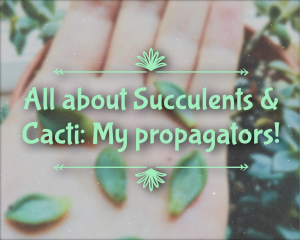All about Succulents & Cacti: My propagators!
Hello again everyone, and welcome to the second part of my “All about Succulents & Cacti” series where I go over some of the things I’ve learned so far about these neat plants. This time I will be talking about 3 of my most prolific propagators.
What is propagating?
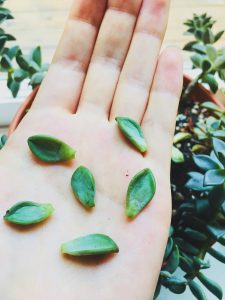
Propagating is the process of producing more plants based on portions of the parent plant. With many other plants, this process can be fairly tricky if you don’t know what you are doing. Succulents on the other hand can be almost too easy to propagate and you can have quite the little army in no time. But do keep in mind that not all succulents and cacti can be propagated in the same way.
There are usually two main ways to propagate a succulent—from leaves or through cuttings, and at this point I have done both. The thing you have to know is that some succulents can only be propagated by cuttings while others can be done either way. Do your research and experiment if you feel comfortable with your plant. So far I’ve found that if the plant has rather fleshy and stocky leaves they can be easy to propagate with the leaf method.
What to look for when propagating?
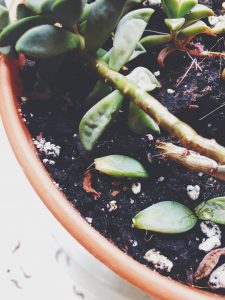
When it comes to leaf propagating, make sure you gently wiggle the leaves so they cleanly pop from the mother plant. If the leaf is broken in half then it will not grow roots. Just remember to be gentle and carefully test to see if a leaf is ready to be pulled. I’ve found that it is rather easy to tell which leaves would be good to propagate, since they just fall from the mother plant without much trouble.
After getting the leaf off, I just lay them on top of the soil and leave them be for a day or two and upwards of a week before watering. I’ve read that you should water new propagating plants daily, but I have never really done this and I’ve had fine success with most of my baby plants.
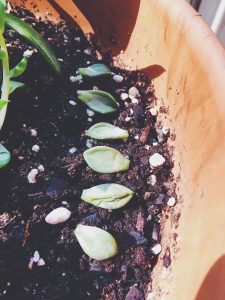
It only takes a few weeks for a leaf to start to grow baby pink or white roots, which is what you want! If you notice a leaf is just growing a new succulent without any roots, this is usually not a good sign. The plant will probably die off before getting any bigger without growing roots.
Some of my best propagators!
Graptopetalum Paraguayense subsp. Bernalense
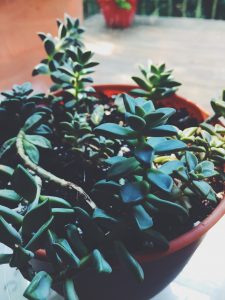
This plant is such a trooper! I haven’t had any major issues with it and it is an unbelievable propagator! This succulent can withstand full sun, but it actually does best in light shade/partial sun or a favorite windowsill which is where my plant makes its home. The common name for these plants is a Ghost Plant and is a native to Mexico. Like many other succulents, these little guys can change color mattering on environmental factors. I know mine is of the subspecies Bernalense because of their rather small size. Other Ghost Plants can actually get quite big outdoors.
When it comes to propagating, this type is known to be successful by all methods, from seed, cuttings, and leaf propagation. I’ve only propagating mine from leaves since it is so easy, but I will likely be trying a cutting soon in the future to bring them back down in size.
Echeveria ‘Perle von Nurnberg’
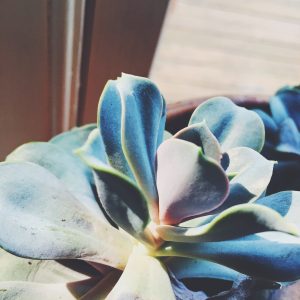
The next succulent in my propagating corner is a very popular type of Echeveria, the Perle von Nurnberg! It has a very pretty appearance with pale purple/blue/ and pink colors, and is known to change color in full sun, but I would recommend slowly transitioning it from indoors to outdoors, since it can definitely get sunburned.
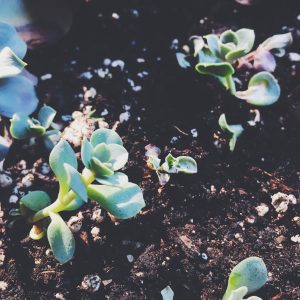
They are prone to mealy bugs, but luckily I have not had any issues with this, but I did have to do a cutting of it since it was having some issues with rot.
As far as propagating I have had success with leaves and the cuttings have been good so far. I will say that leaf propagating with this plant has been a hit and miss more so than my Ghost Plant. In general though, this is a very easy plant to propagate and it is a beautiful plant to have in any succulent and cacti lover’s collection.

Kalanchoe Tomentosa
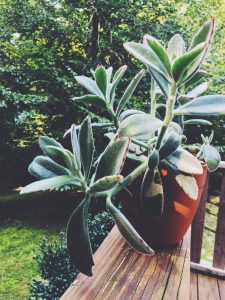
This is one of my most problem free succulents and it’s just adorable! Kalanchoe Tomentosa common names include Panda Plant or Pussy Ears, which is understandable considering its fuzzy appearance and elongated oval pale grey blue/green leaves which sport brown spotted edges. I absolutely love this native Madagascar succulent and it has been so easy to care for. Since purchasing this plant as just a tiny thing it has been one of my fastest growers, and this goes for my propagation attempts as well. This is interesting since some of information I’ve read on these plants say that they are rather slow growing.
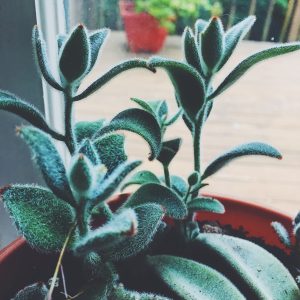
It’s best to propagate these plants in spring and summer, and so far I have had great luck propagating from leaves. These plants can also do well in a hanging basket and they will typically only grow as big as the container they are in. these planets do flower in the wild but they very rarely flower as indoor plants unless it’s a subspecies.
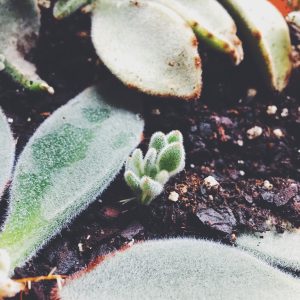
Also, if you are a particular fan of the brown/red spots they have, then you might prefer the Chocolate Solider variety of the panda plant which has more of that brown/red edge and tend to be more yellow in color.
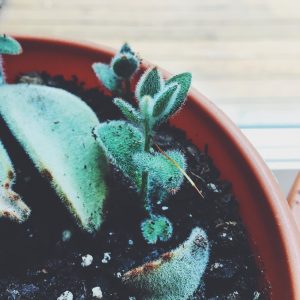
~~~
So that is some of the tips I’ve learned about propagating succulents so far, as well as my recommendations for the plants I’ve found to be the best for this! If you know some other great propagators, then definitely let us know in the comments down below!
Thanks for reading!
Looking for more on succulents & cacti? Check out our previous post HERE.
